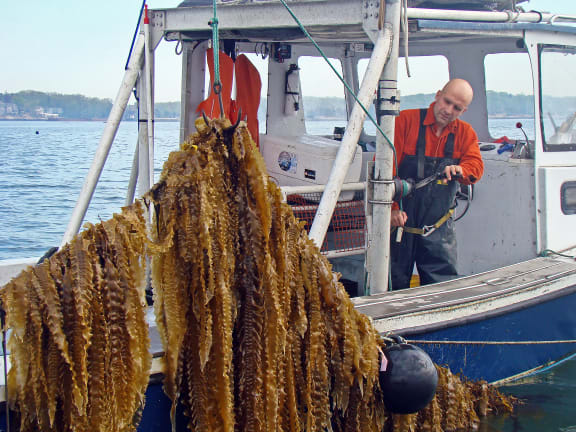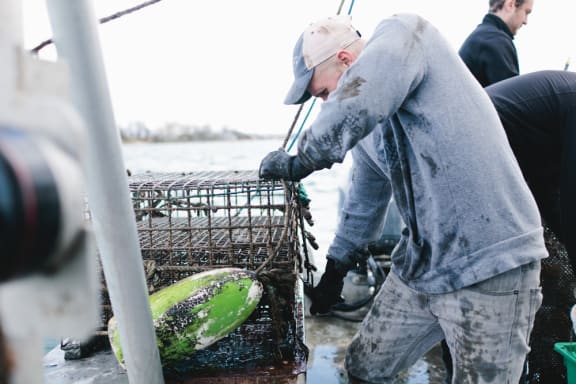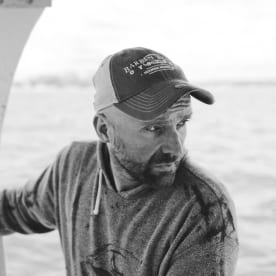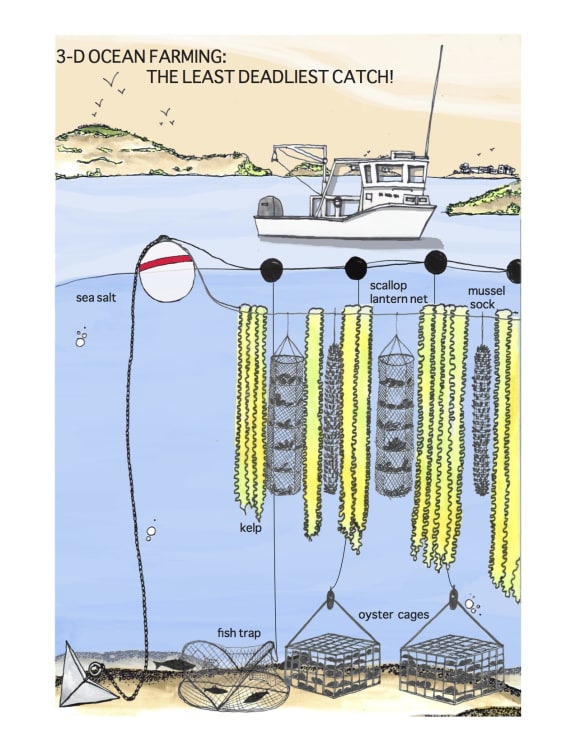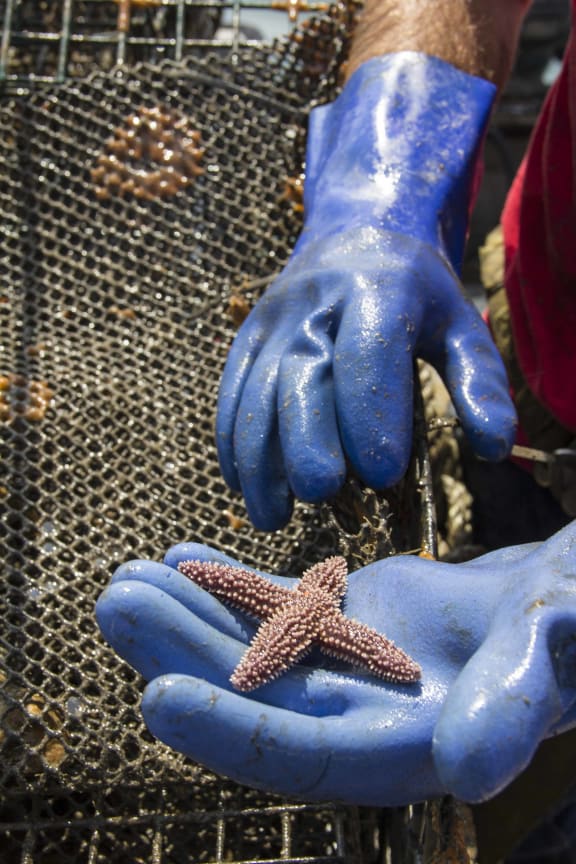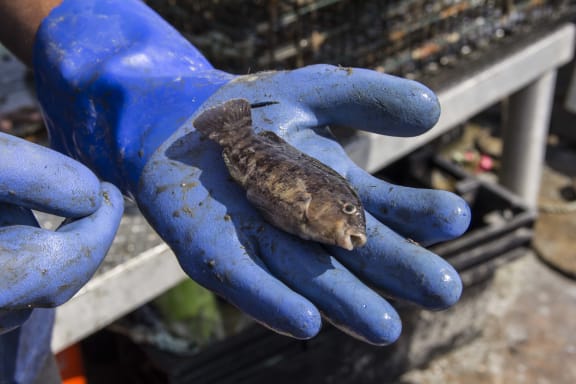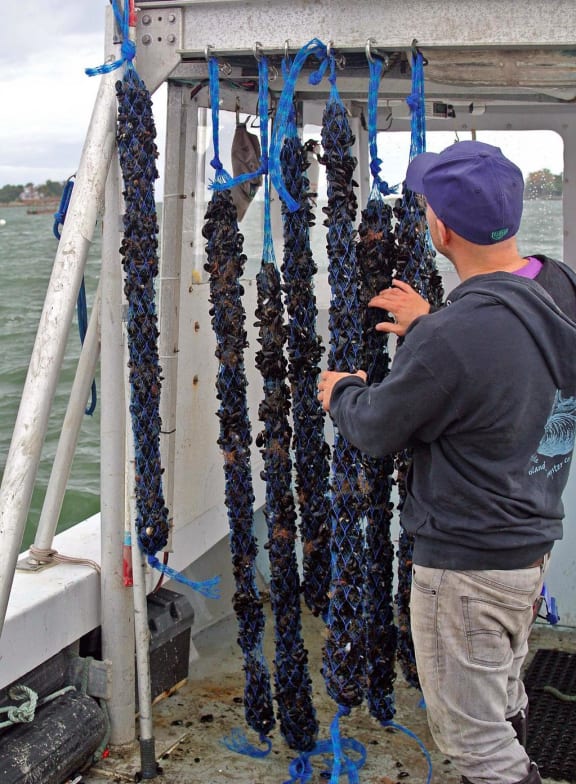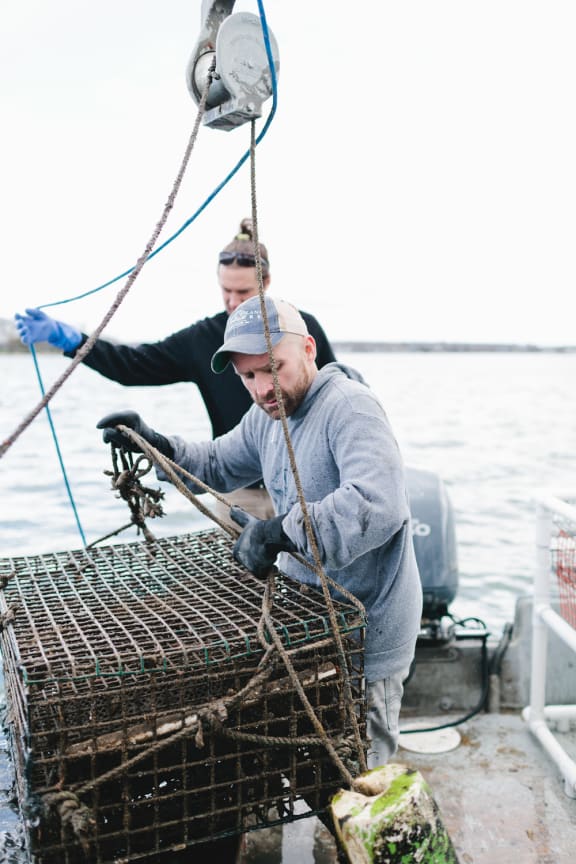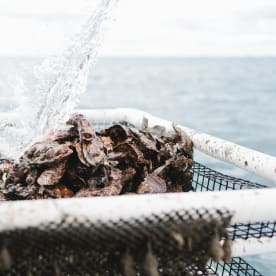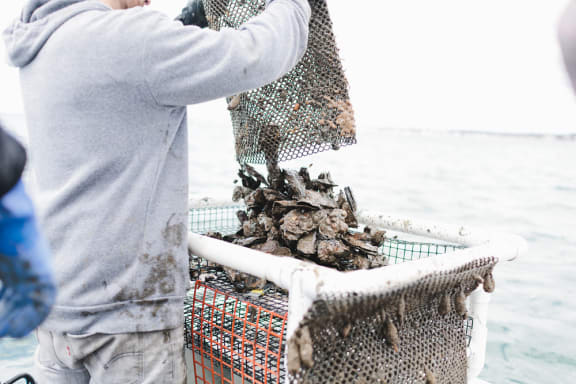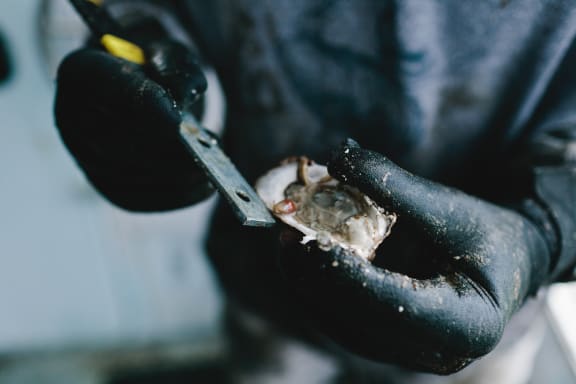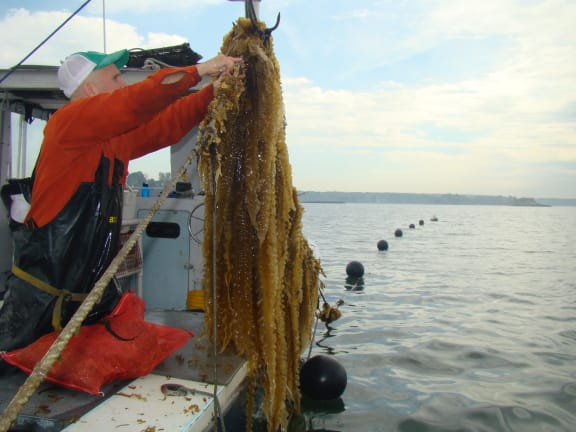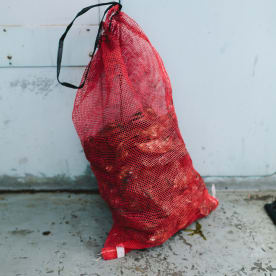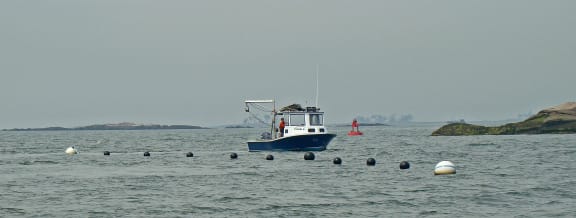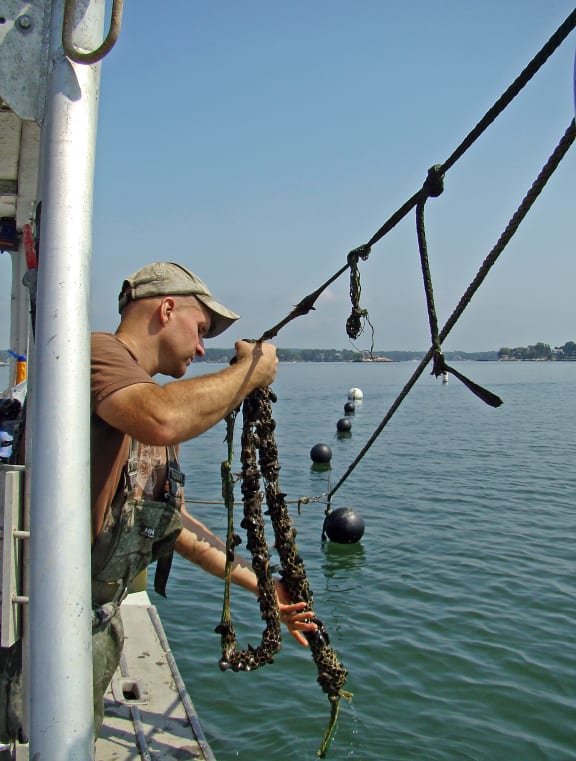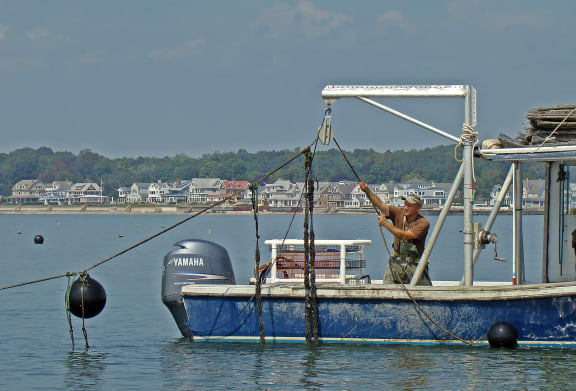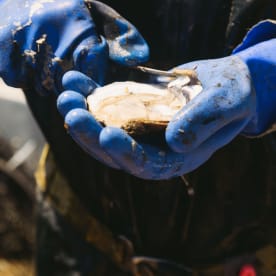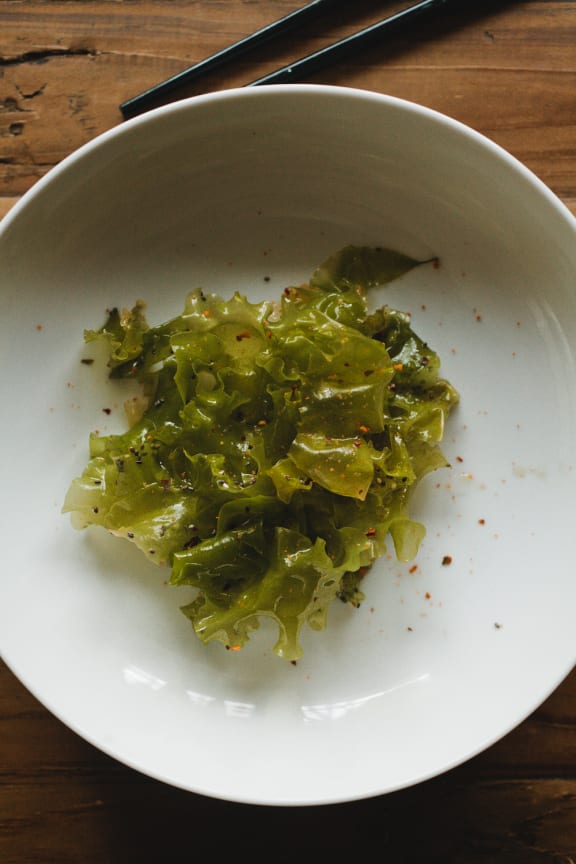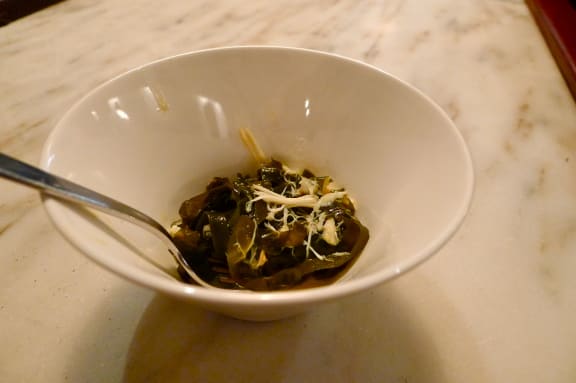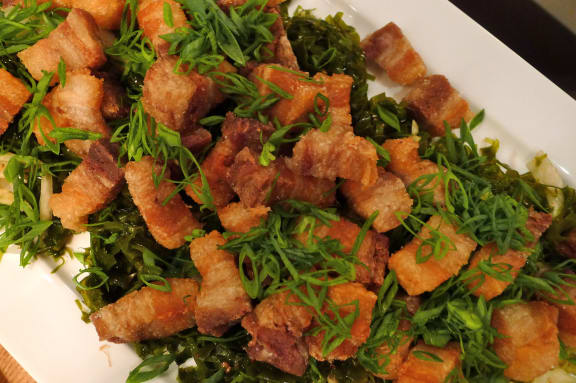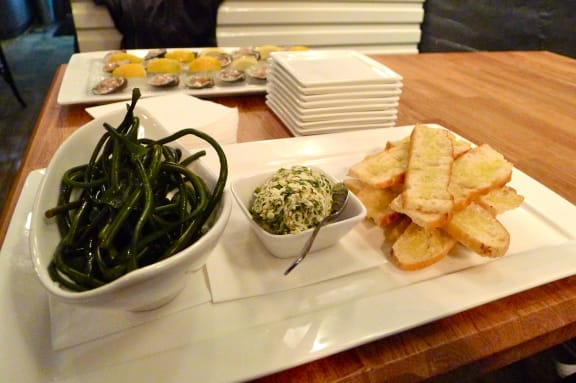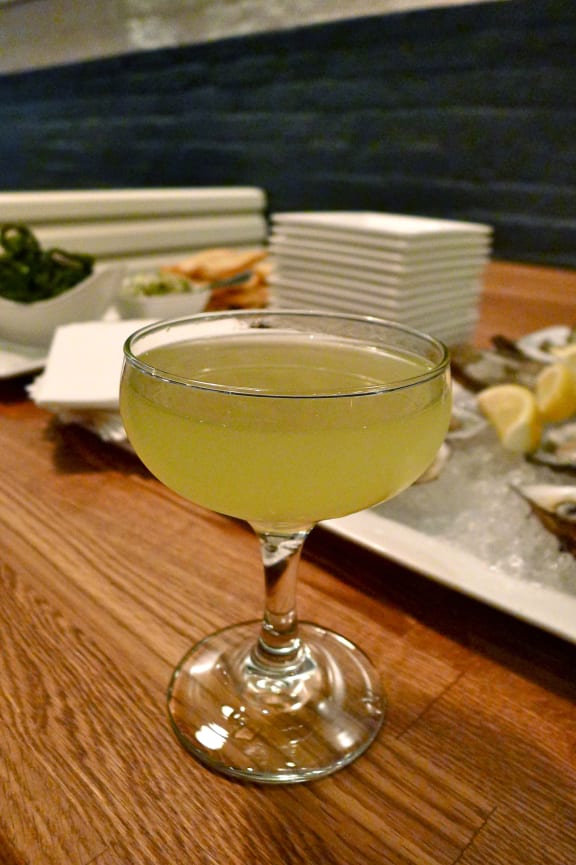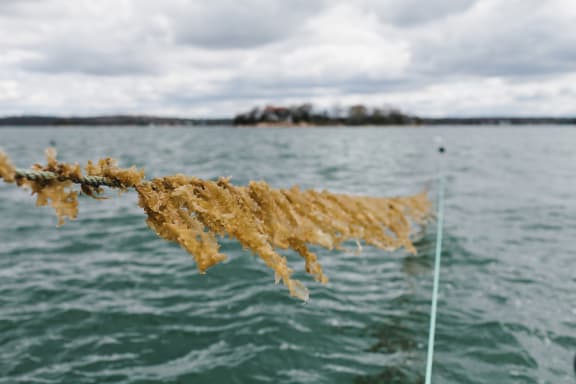“I can’t go to the same bars I used to as a fisherman ‘cause we hunt and chase things, right? We fight the ocean… And now I’m just a boring guy picking through shells and plants in the ocean.”
After years working as a commercial fisherman in the US, Bren now produces two types of seaweed, four kinds of shellfish and harvests salt on Thimble Island Ocean Farm in Long Island.
The ‘3D’ ocean farm resembles a vertical underwater garden, with seaweed and mussels growing on floating ropes stacked above oyster and clam cages.
Bren tells Kathryn Ryan that the oystermen, fishermen and farmers of the world are the 'canaries in the coalmine' of climate change.
Bren says he loved working as a commercial fisherman and still really misses those days.
“The humility of being in 40ft seas and working with 13 other people in the belly of a boat for three months at a time. At the time I felt pride in being a fisherman and helping feed my country.”
When the cod stocks crashed in Newfoundland in the ‘90s and Bren was thrown out of work along with many others, he says his generation of fishermen got a wake-up call.
“The captains of industry, they were thinking short-term – they wanted to fish the last fish and chase fewer and fewer fish further and further out to sea. But younger folks, we wanted to spend our lives on the ocean. We’re not really environmentalists, what we want to do is save our seas in order to have a place to work.”
Bren tried out conventional aquaculture in the ‘90s as “the great answer to overfishing and job creation” but found it too removed from the quest for sustainability he was seeing in the land-based agriculture industry.
“We were essentially Iowa pig farms at sea – bloating local waterways, filling fish with antibiotics, pesticides. We used to say, looking back, that we were growing neither fish nor food.”
So he left aquaculture and started cultivating one species of oyster in the Thimble Islands, which he did for seven years. At first it was a struggle.
“It started out very slow. I had to sell woodworking on the streets of New York City to support myself the first couple of years. I lived in an old airstream trailer for years and years.”
Then within two years Hurricane Sandy and Hurricane Irene hit and wiped out 90% of his crop – twice.
“What I began to wake up to was this new normal – how am I going to run a small business? How am I going to run a farm? How am I going to feed my family if climate change has arrived 100 years earlier than we expected?”
He was committed to sticking it out in the water and decided to "lift [his] farm off the bottom and use the entire water column and start growing as many species as I could in 20 acres”.
Bren doesn’t describe himself as an environmentalist, at least in the conventional sense.
“It’s not just about conservation, but it’s actually about this really interesting nexus of protecting and restoring the planet, creating jobs and lifting communities out of poverty, food security – that interesting space, I think, is the new face of environmentalism.”
Yet all the species grown at the farm are restorative – the oysters filter nitrogen, kelp soaks up five times more carbon than land-based plants – and zero-input, which is “hands-down the most sustainable form of food production on the planet.” Bren says.
He describes his farm as more of a community space than a privatised patch of the sea.
“People come and fish, they swim through our kelp forests… so it's almost like a farm and an underwater community garden at the same time.”
And regardless of how people feel about eating seaweed now, Brent says, as a zero-input food, it will “driven onto our plates” in the future.
“We don’t need to feed, we don’t need to water, we don’t need to fertilise our crops. They all just grow naturally in the water. Zero-input food will be the most affordable food to grow, therefore the most affordable food in the supermarket.”
And chefs are getting excited about the 10,000 edible plants in the ocean. The key is to think of seaweed as a vegetable, he says.
“Imagine being a cook and finding out there are arugulas, spinaches, corns, rices, tomatoes that you’ve never even heard of before, let alone cooked.”
Bren hopes that eventually the seafood plate will be rearranged to have bivalves and ocean plants at the centre and wild fish at the edges.
“Fish are our last wild food, they’re beautiful creatures. We’re hoping they will be a treat we have once or twice a month.”
